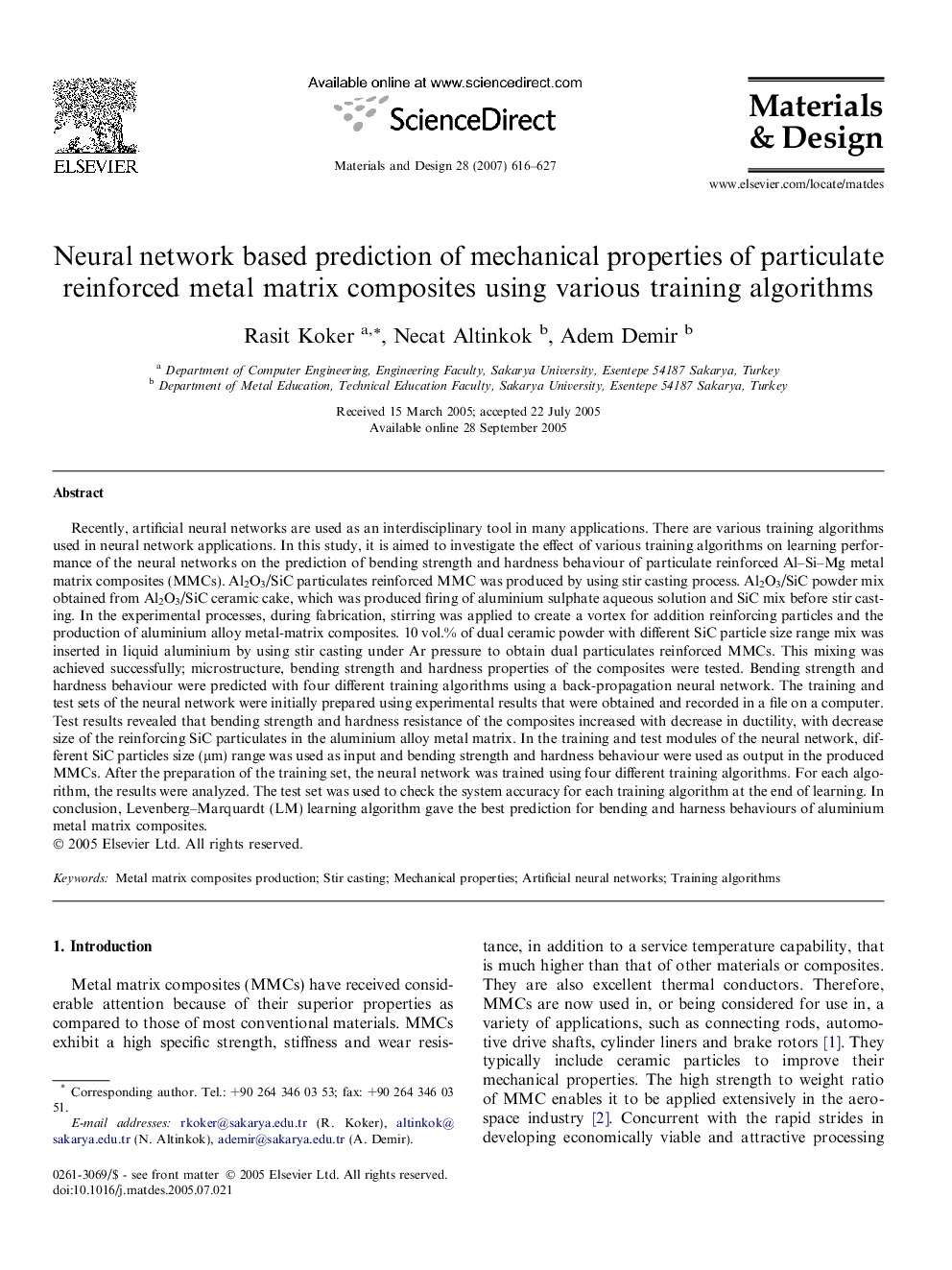| کد مقاله | کد نشریه | سال انتشار | مقاله انگلیسی | نسخه تمام متن |
|---|---|---|---|---|
| 833595 | 908147 | 2007 | 12 صفحه PDF | دانلود رایگان |

Recently, artificial neural networks are used as an interdisciplinary tool in many applications. There are various training algorithms used in neural network applications. In this study, it is aimed to investigate the effect of various training algorithms on learning performance of the neural networks on the prediction of bending strength and hardness behaviour of particulate reinforced Al–Si–Mg metal matrix composites (MMCs). Al2O3/SiC particulates reinforced MMC was produced by using stir casting process. Al2O3/SiC powder mix obtained from Al2O3/SiC ceramic cake, which was produced firing of aluminium sulphate aqueous solution and SiC mix before stir casting. In the experimental processes, during fabrication, stirring was applied to create a vortex for addition reinforcing particles and the production of aluminium alloy metal-matrix composites. 10 vol.% of dual ceramic powder with different SiC particle size range mix was inserted in liquid aluminium by using stir casting under Ar pressure to obtain dual particulates reinforced MMCs. This mixing was achieved successfully; microstructure, bending strength and hardness properties of the composites were tested. Bending strength and hardness behaviour were predicted with four different training algorithms using a back-propagation neural network. The training and test sets of the neural network were initially prepared using experimental results that were obtained and recorded in a file on a computer. Test results revealed that bending strength and hardness resistance of the composites increased with decrease in ductility, with decrease size of the reinforcing SiC particulates in the aluminium alloy metal matrix. In the training and test modules of the neural network, different SiC particles size (μm) range was used as input and bending strength and hardness behaviour were used as output in the produced MMCs. After the preparation of the training set, the neural network was trained using four different training algorithms. For each algorithm, the results were analyzed. The test set was used to check the system accuracy for each training algorithm at the end of learning. In conclusion, Levenberg–Marquardt (LM) learning algorithm gave the best prediction for bending and harness behaviours of aluminium metal matrix composites.
Journal: Materials & Design - Volume 28, Issue 2, 2007, Pages 616–627